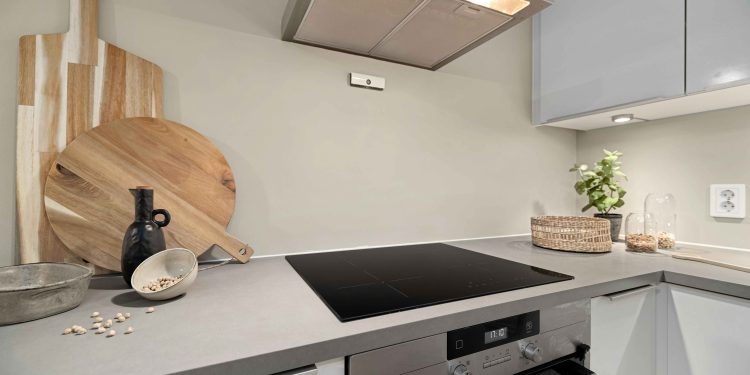Glass cooktops add a touch of elegance to any kitchen. They’re sleek, modern, and make cooking feel a little more refined. But as any homeowner or cooking enthusiast knows, this aesthetic comes with responsibility. Glass cooktops are prone to spills, stains, and smudges that diminish their beauty and shine. Cleaning them isn’t just about preserving their look; it’s also essential for maintaining their efficiency and preventing long-term damage.
If you’re wondering how to clean your glass cooktop effectively without scratches or streaks, you’re in the right place! This guide will provide you with tried-and-tested tips and instructions to keep your cooktop spotless and gleaming.
Why Proper Cleaning Matters for Your Glass Cooktop
Glass cooktops aren’t just stylish they’re designed for precision cooking. However, they also require a little extra care. Dust, dirt, or stubborn stains left behind can build up over time and affect their heating capabilities. Worse yet, improper cleaning methods can lead to unsightly scratches or even cracks.
By adopting the right cleaning techniques, you’ll not only extend your appliance’s lifespan, but you’ll also ensure optimal cooking performance. Plus, there’s nothing quite like a spotless cooktop that enhances the overall appearance of your kitchen!
Your Cooktop’s Surface
Before we jump into cleaning strategies, let’s take a closer look at how glass cooktops work. These surfaces are made of durable, tempered glass built to withstand heat. Beneath the surface are electric or induction elements that rapidly heat your cookware. While the glass can handle high temperatures, it’s still delicate when it comes to abrasions.
Remember—prevention is better than cure. Act early to clean spills and residue to prevent permanent marks or damage.
Sparkling Clean Cooktop
To clean your glass cooktop effectively, you’ll need some basic tools and supplies. Thankfully, most of these are everyday household items!
Must-Have Cleaning Tools and Materials
- Microfiber cloths: These are ideal for wiping without causing scratches.
- Soft sponges: For scrubbing away residue gently.
- Dish soap: A common cleaning agent for mild stains and spills.
- White vinegar: This natural cleaner works wonders for streak-free results.
- Baking soda: A mild abrasive for tougher stains.
- Cooktop scraper: Specially designed to remove stubborn, burnt-on stains without scratching.
- Commercial glass cooktop cleaner (optional): Ideal for delivering that extra shine.
By gathering the right supplies, you set yourself up for success while avoiding damage to the cooktop.
Daily Maintenance Tips for Busy Kitchens
Busy kitchens often mean spattered grease, boiled-over sauces, or coffee spills. Daily cleaning habits are the simplest way to keep your glass cooktop looking great after every use.
- Wipe It Down – Once the cooktop has cooled down, use a damp microfiber cloth to quickly wipe off any fresh spills or food debris.
- Use Mild Soap – For light grease, a drop of dish soap on a sponge should take care of it. Wipe in circular motions, then dry with a clean cloth to avoid water spots.
- Spot Check Smudges – Got a little fingerprint or smudge left behind? Dab some white vinegar on a cloth and buff away the marks.
Developing this simple daily maintenance routine will save you time and effort in the long run.
Deep Cleaning for Stubborn Stains
When spills sit too long or food boils over, you’ll need a deeper cleaning approach. Don’t worry—these stubborn stains can be tackled with patience and the right methods.
Step-by-Step Deep Cleaning
- Cool and Clear – Ensure the cooktop is completely cool before starting. Remove any loose food debris using a damp cloth.
- Apply Baking Soda Paste – Mix baking soda with water to form a gentle paste. Spread it over the stained areas.
- Spray with Vinegar – Lightly spritz the area with white vinegar and allow the mixture to fizz. This reacts to loosen burnt-on residue.
- Scrub Gently – Use a soft sponge to scrub away the stains. Avoid pressing too hard to prevent scratches.
- Rinse and Buff – Wipe with a clean, damp cloth followed by a dry microfiber cloth to remove all traces of the mixture.
Your cooktop will shine like new!
The Best Way to Handle Burnt-On Food and Spills
Burnt-on food can seem impossible to remove, but with some persistence and the right tools, it can be handled effectively.
- Use a Cooktop Scraper – A specially designed razor scraper is your best bet. Hold it at a 45-degree angle and gently scrape away the residue.
- Try a Commercial Cleaner – For extra burn marks, use a glass cooktop cleaner. Follow the instructions on the packaging for best results.
- Polish and Inspect – After removing the residue, polish the surface with a microfiber cloth, checking for lingering spots.
Avoiding Common Cleaning Mistakes
When cleaning glass cooktops, certain actions can cause more harm than good. Here’s what to avoid at all costs:
- Abrasive Tools – Don’t use steel wool or harsh scouring pads, as they can scratch the glass.
- Harsh Chemicals – Skip ammonia-based products or bleach that may damage the surface or cause discoloration.
- Cleaning While Hot – Glass cooktops need to cool completely before cleaning, as sudden temperature changes could cause cracks.
Being cautious pays off in the long run, so use gentle methods to protect your appliance.
If you’ve cleaned the cooktop but it still looks dull, polishing can make all the difference. Use a commercial glass polish or white vinegar for streak-free results. Apply the solution, buff it gently with a microfiber cloth, and see the difference it makes!
Tips for Preventing Long-Term Damage
To maintain the durability of your cooktop, follow these preventive measures:
- Use the Right Cookware – Stick to flat-bottom pots and pans for even heat distribution and less chance of scratches.
- Clean Spills Quickly – Don’t give spills a chance to harden or stick.
- Protect from Scratches – Never drag cookware or utensils across the surface.
These simple habits will go a long way in keeping your glass cooktop in top shape.
Eco-Friendly Solutions for Cleaning
If you prefer natural cleaners, white vinegar and baking soda are your two go-to ingredients. They’re non-toxic, environmentally friendly, and highly effective for most cleaning tasks. Plus, they’re a fraction of the cost of commercial cleaners!
Regular maintenance and consistent cleaning habits will keep your cooktop looking pristine for years to come. By investing a few minutes daily, you save yourself from labor-intensive scrubbing sessions later.
Conclusion
A sparkling glass cooktop is more than just eye candy—it’s a vital part of your cooking experience. With the right cleaning routine and tools, maintaining its beauty and functionality is simpler than you might think.
Start by integrating the tips provided here into your daily and weekly cleaning habits. You’ll be amazed at how much difference a clean cooktop makes—not just in your kitchen’s appearance but also in your cooking efficiency.













